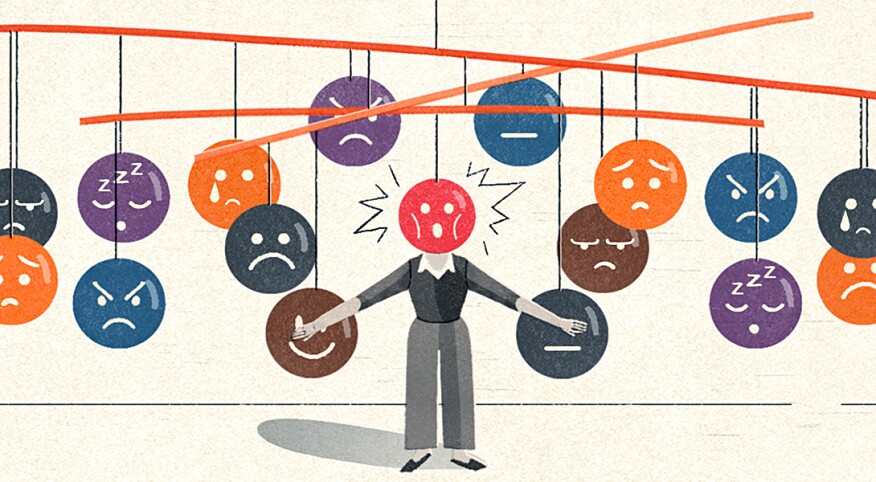I knew from having close friends a few years older that sometime around my mid- to late-40s, certain “things” were going to start happening to my body that would be a clear signal of my declining fertility, and subsequent journey into menopause. There were the common “things” that the majority of women begin to experience, like unexpected weight gain and/or a huge drop in metabolism.
I noticed those immediately, as it seemed to just maintain my weight and not gain overnight, I had to keep up a constant level of physical exercise and abide by a restrictive diet — both of which 10 years ago would have made my body shed pounds easily. Keeping extremely active was by no means easy, because a new level of fatigue also began to visit me certain times of the month, and with it, some volatile and angry mood swings, accompanied by crying jags. And then I started to experience the dreaded, “What did I just walk in this room for?” type of short-term forgetfulness, along with the occasional foggy head. These made me question my brain’s cognition, or lack thereof.
There were also a variety of perimenopausal side effects that, ironically enough, mirrored those of adolescent puberty. My breasts grew larger and at times felt achingly swollen and engorged, and my face broke out in cystic acne all along my jawline. Stubborn chin hairs began poking out (making tweezers my new best friend), and for someone who was always a rock-star sleeper, I now found myself eyes wide open at 2 a.m., my agitated mind racing with endless and anxious thoughts that I couldn’t seem to shake.
And speaking of anxious thoughts, they gradually flourished with more frequency and irrationality, and eventually began to feel like depression, something I recognized from having during my postpartum phases of motherhood. Were depressive symptoms another unwelcome dish in this perimenopausal buffet platter I was now forced to consume? Or was it a combination of midlife malaise and the instability of hormones that was causing it? Does this happen to all women on their journey to and through menopause, or was this newly arrived depression some serotonin-related chemical imbalance in my brain? And why was it making an appearance NOW?
A changing body I was prepared for, but a changing mind? I was blindsided.
The cycle of a woman’s life lends itself to many mental ups and downs, most of which are, in fact, hormone-related. PMS, postpartum depression (PPD) and the more severe postpartum psychosis are now seen as extremely treatable, and we’ve made great strides in destigmatizing all those forms of depression. But until recently, perimenopausal depression wasn’t something treated as its own specific kind of depression. That changed last year when the North American Menopause Society (NAMS) and the Women and Mood Disorders Task Force of the National Network of Depression Centers released the first guidelines for the evaluation and treatment of perimenopausal depression, now known as PD.
The guidelines make clear that PD is different than depression at other times in a woman’s life, because of both the physical and chemical changes that are happening in her body, as well as the lifestyle ones. Fluctuations in estrogen levels during perimenopause, especially the extreme lows, can trigger depression in some women, but not all. If you’ve experienced PPD and have had depression at other times in your life, the estrogen fluctuations you’re having now may make you more vulnerable to depression at this stage of life.
In addition, middle age brings with it huge emotional burdens like taking care of aging parents, dealing with young adult children leaving the nest, and probably huge career obligations and pressures because you’re likely at the highest stage of your earning potential. All those things combined can be the spark that ignites feelings of sadness and despair, and ultimately lead you to fall into depression.
Because the causes of midlife depression are so complex, it’s vital to speak with both your physician and ob-gyn about your symptoms. For me, it took some serious self-coaxing myself into opening up with my doctor about the dark moods I was experiencing. And were they something that could be treated, or was this some new normal I would be living with because of
the aging process? Was it sadness because I was headed toward menopause soon, or was it sadness because of something else?
Luckily there are treatment options specifically for PD, and they can include a variety or a combination of hormone therapies, antidepressants, cognitive behavioral therapies, changes in diet, exercise, and even mindfulness practices like yoga and meditation. There is no one-size-fits-all treatment plan for PD, so working closely with your health care providers is essential to helping get you out of perimenopausal depression and back into your life.
Don’t just assume PD is a normal phase of your menopause journey and part of the aging process, because it’s not. Now those chin hairs? Well, I can’t help you there.
Don't let the effects of aging blindside you. Join AARP today and enjoy access to a variety of resources designed to help you age well.

Gracia Lam









